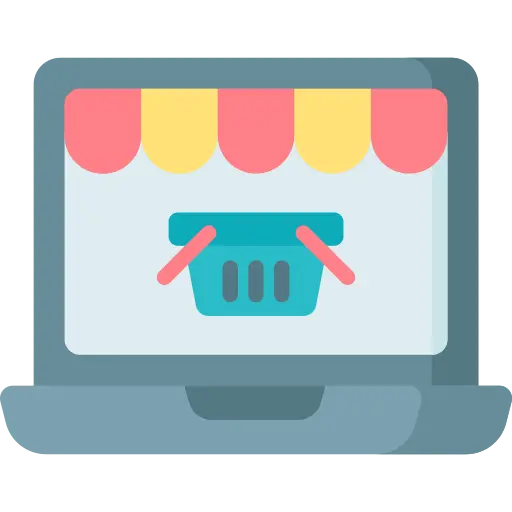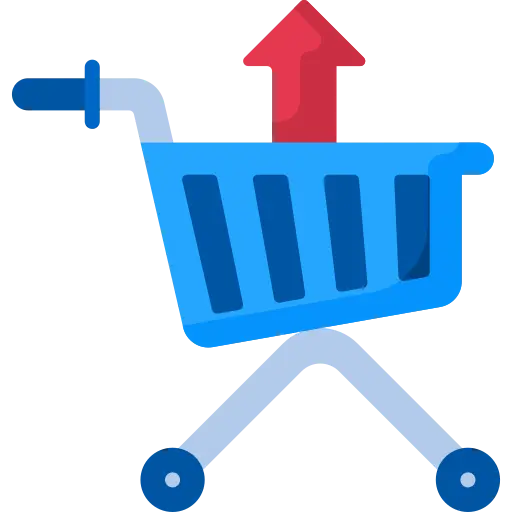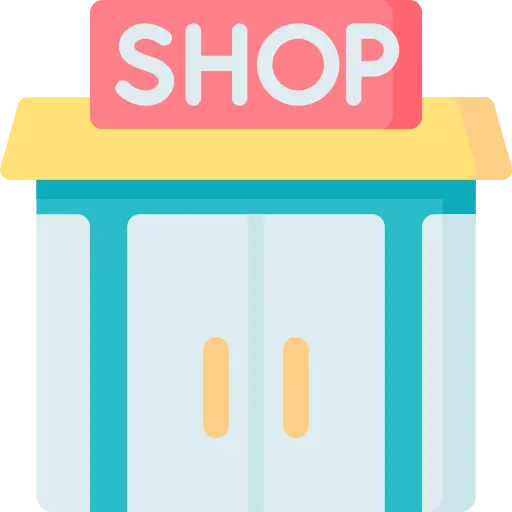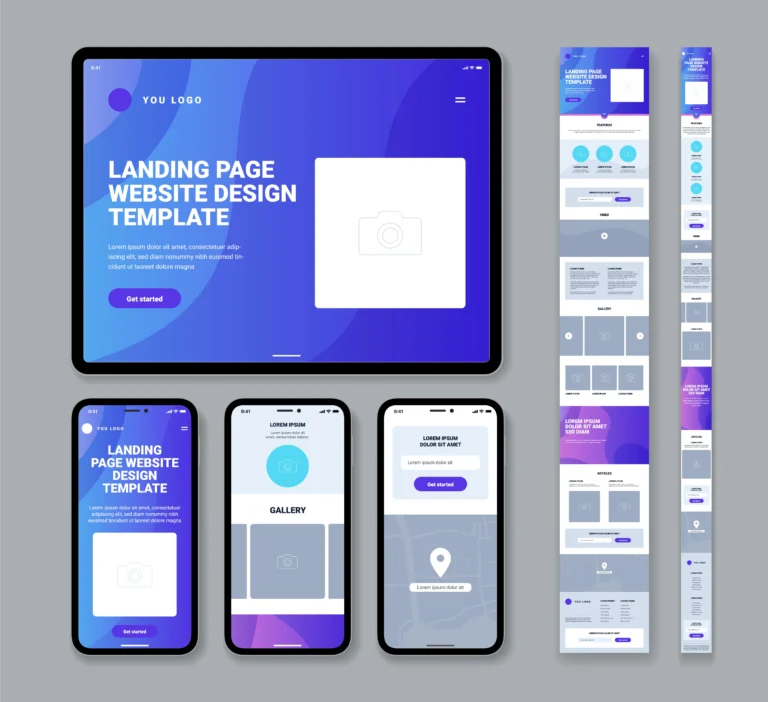Start a Simple Online Store That Actually Works – 4 Steps
A simple online store is an excellent choice for small businesses or individuals who wish to offer goods or services online but lack the means or time to engage in a more complicated e-commerce platform. A simple online store is generally less expensive and easier to set up and operate than a full-fledged e-commerce website, making it an excellent alternative for people who are just getting started or don’t have much expertise with online retailing.

Aside from the cost and time advantages, a simple online store has the added benefit of being simple for customers to use. Customers may easily locate what they’re looking for and make a purchase without being overwhelmed or annoyed by a simple layout and a restricted number of items or services.
Having a professional, well-designed website is still crucial, even if a simple online store is faster to set up and run. A professional and user-friendly website can help you create credibility and trust with potential consumers, and may make or break whether people opt to buy from your shop.
Introduction of a Simple Online Store
Benefits of a Simple Online Store
A simple online store has various advantages for both customers and the business owner. Among the primary advantages are:
- Customers find it easier to access and utilize a simple online store than a more sophisticated e-commerce website. Customers may easily locate what they’re searching for and make a purchase without becoming overwhelmed or annoyed when there are fewer items or services to pick from and a simple layout.

- A simple online store is generally less expensive to set up and operate than a full-fledged e-commerce website. This is especially advantageous for small enterprises or individuals with little resources to spend on their online store. You won’t have to invest as much time or money in establishing and maintaining your website with a simple online store, which can help you keep your overhead expenses low.
- Flexibility: A simple online shop is more adaptable than a full-fledged e-commerce website, which might be advantageous if you’re just starting out or don’t have many items or services to offer. You may add or delete items or services as needed with a simple online store, without having to worry about developing a complex website structure.
- Simplicity: A straightforward internet store is simply that. Customers who don’t want to be inundated with too many alternatives or diversions may find this intriguing. A simple online store might also be easier to run for the business owner because there are fewer elements or features to worry about.
Importance of a Simple Online Store
A professional, well-designed website is essential for your online store’s success. A website is frequently the first point of contact that potential clients have with your company, so it is critical to establish a strong first impression. A well-designed website may assist you in establishing credibility and trust with your target audience, which is essential for turning visitors into customers.
A professional, well-designed website may also aid improve your clients’ user experience. Customers will be more inclined to return to your website if it is easy to browse and visually appealing.

Furthermore, a professional, well-designed website may aid in the improvement of your search engine rankings and make it simpler for potential customers to reach your online business. Search engines like Google appreciate well-designed and user-friendly websites, so investing in a professional website may pay off in the long term by attracting more traffic to your shop.
Overall, having a professional, well-designed website is critical for your online store’s success. It aids in the establishment of credibility and trust with your audience, enhances the user experience for your consumers, and can aid in the improvement of your search engine rankings.
Setting up your website
Choosing a domain name and hosting provide
One of the first steps in developing a website for your online business is to select a domain name and hosting provider. The online address that users will use to reach your website is your domain name (e.g. www.yourstore.com). It is critical to select a domain name that is simple to remember and symbolizes the nature of your organization.
There are several domain name registrars to select from, and fees vary based on the availability and popularity of the desired domain name. Before making a selection, it’s a good idea to perform some research and pricing comparisons.

After you’ve decided on a domain name, you’ll need to choose a hosting service to store your website’s files and make them available to visitors. There are several hosting alternatives, such as shared hosting, VPS (virtual private server) hosting, and dedicated hosting. The sort of hosting you select will be determined by the size and requirements of your online business. Shared hosting is often the most cost-effective choice for small to medium-sized websites, although VPS and dedicated hosting provide greater resources and are better suited for bigger, more complicated projects.
When selecting a hosting service, consider variables such as pricing, uptime, and customer support. It’s also a good idea to study reviews and compare various hosting services in order to locate the best one.
Installing and configuring a Content Management System (CMS)
After you’ve decided on a domain name and hosting provider, the next step in developing an online retail website is to install and configure a website builder or content management system (CMS). A website builder is a program that allows you to construct a website without any technical background or coding experience. Website builders frequently include templates and drag-and-drop tools that allow you to quickly and simply construct a professional-looking website.
A content management system (CMS) is a piece of software that enables you to generate, update, and publish material on your website. WordPress, Joomla, and Drupal are just a few of the CMS alternatives accessible. CMSs are more sophisticated than website builders, but they provide greater flexibility and customization.
When selecting a website builder or CMS, keep your budget in mind, as well as the features you want and the amount of customization you desire. It’s a good idea to conduct some research and evaluate several possibilities to locate the one that best matches your requirements.

After you’ve decided on a website builder or CMS, you’ll need to install and configure it. Typically, this entails downloading the program to your hosting account and following the installation instructions. Some website builders and CMSs include installation and setup services in their packages, which might be useful if you aren’t comfortable doing it yourself.
Once your website builder or CMS is installed and configured, you can begin constructing and customizing your online store. This normally entails developing pages, and menus, and adding content and media like text, photographs, and videos.
Creating the style and look of your website
Creating a professional and user-friendly online store begins with designing the style and appearance of your website. The layout of your website refers to the arrangement of the various components (such as text, graphics, and navigation) on the page. The overall look and feel of your website include the color scheme, font selections, and branding components like logos and images.
When developing the layout of your website, keep the user experience in mind. You want to design a layout that is simple to use and helps the customer through the process of locating things and purchasing them. Creating a clear hierarchy of information and employing visual elements like headers, bullet points, and graphics to break up the text and make it simpler to read are common examples.
The aesthetic of your website is particularly significant since it contributes to the establishment of your brand and the creation of a consistent look and feels for your online store. Using the proper color scheme, fonts, and images will assist you in creating a professional and aesthetically appealing website that appeals to your target audience.
There are several tools and resources available to assist you in designing the style and appearance of your websites, such as website builders, theme templates, and design applications like Photoshop. It’s a good idea to conduct some research and try out several solutions to see which one works best for you.
Adding products to your simple online store
Creating product pages and descriptions
Creating product pages and descriptions is a critical step in getting your basic online store up and running. Product pages are distinct web pages that highlight each of your products or services. They usually feature information like the name of the product or service, a description, pricing, and photographs.
Product descriptions are a crucial aspect of your product pages since they teach potential buyers about your items and urge them to buy. Product descriptions should be precise, simple, and informative, emphasizing the essential features and benefits of your items.
You’ll need to gather all of the relevant information about your items or services before you can develop product pages and descriptions for your simple online store. This often comprises the name of the product or service, a thorough description, price, and high-quality photographs. You must also determine how you want to organize your items, such as by category, price, or popularity.

You may begin developing your product pages and descriptions after you have all of the essential information. This generally entails entering the content into your website builder or CMS and arranging it in a visually pleasing and easy-to-read style. You may also want to consider including customer evaluations or ratings to assist persuade potential shoppers.
Overall, generating product pages and descriptions is a vital component of getting your small online store up and running. It aids in informing potential clients about your items and persuading them to buy.
Adding high-quality photos of your products
Including high-quality images of your items is an essential step in creating your easy online store. When potential buyers visit your product site, photos are generally the first thing they see, and they may be a deciding factor in whether or not they make a purchase.
High-quality images are vital for presenting your items in the best light possible. They should be clear, well-lit, and show the product appropriately. To offer potential buyers a solid impression of what the product looks like, take many images from different perspectives and in varied lighting situations.
High-quality images may assist to create credibility and trust with potential buyers in addition to showing your items. Customers are more inclined to trust a company that invests in presenting their items in a professional and aesthetically appealing manner.
You’ll need to take or hire a professional photographer to upload high-quality images of your items to your modest internet store. When you have the photographs, upload them to your website builder or CMS and place them on your product pages. Optimize your photographs for the web by storing them in a web-friendly format (such as JPEG or PNG) and compressing them to minimize file size.
Overall, including high-quality images of your items is an important component of creating a straightforward online store. It aids in presenting your items in the best possible light while also establishing credibility and trust with potential buyers.
Setting up a shopping cart and payment gateway
Setting up a shopping cart and payment gateway is an important element of creating a basic online business. A shopping cart is a tool that allows clients to add products to their virtual shopping baskets and keep track of what they wish to buy. A payment gateway is a service that handles and securely transmits credit card or other payment information between your online business and a customer’s bank.
There are several shopping carts and payment gateway alternatives accessible, and the one you select will be determined by your requirements and budget. WooCommerce (for WordPress), Shopify, and Magento are some prominent shopping cart solutions. PayPal, Stripe, and Square are all popular payment gateways.

You’ll need to perform the following to set up a shopping cart and payment gateway for your small online store:
- Select a shopping cart and payment gateway that are appropriate for your requirements and budget.
- Create an account with the shopping cart and payment gateway of your choice.
- Integrate your online store’s shopping cart and payment gateway. This generally entails adding a few lines of code to your website or utilizing a shopping cart or payment gateway plugin or extension.
- Check that your shopping cart and payment gateway are both operational.
Setting up a shopping cart and payment gateway is an important element of creating a simple online store. Customers may add things to their virtual basket and make safe transactions with their credit card or other payment option.
Promoting your simple online store
Using social media and email marketing to reach out to prospective consumers
Using social media and email marketing to promote your small online business may be an efficient strategy to reach out to potential consumers and generate traffic to your website.
Social media marketing is producing and disseminating content on social media platforms in order to raise brand recognition, create leads, and drive sales. This may be accomplished by providing updates about your shop and items, sharing intriguing photographs and videos, and connecting with consumers via comments and direct messages. It’s critical to discover and establish a presence on the social media sites that your target audience utilizes the most.

Sending promotional emails to a list of subscribers who have signed in to receive messages from your company is what email marketing entails. These emails may contain information about new goods, special discounts, and other pertinent information. You may develop your email list by offering incentives to sign up, such as discounts or exclusive content. When establishing email campaigns, it’s critical to customize the content and make it relevant to your subscribers’ interests.
Both social media marketing and email marketing may be successful ways to reach out to potential consumers, but they should be utilized as a part of a wider, integrated marketing plan. It is also critical to assess the efficacy of your efforts and alter your strategy accordingly.
Implementing search engine optimization (SEO) strategies to improve your website’s visibility
Implementing search engine optimization (SEO) tactics is a critical component of marketing your small online store. SEO is the practice of increasing your website’s exposure and rating in search engines such as Google. When customers search for terms relating to your products or services, you want your website to appear at the top of the list.
There are several SEO tactics you may use to increase the exposure of your website, including:
- Keyword research is identifying the terms and phrases that consumers use while searching for items or services linked to your company. Use these keywords in the content, titles, and tags of your website to assist search engines to understand what your website is about.
- On-page optimization: Ensure that your website is search engine optimized by using important keywords in your titles, headers, and content. Make sure your website is mobile-friendly and loads quickly by using alt tags to explain pictures.

- Off-page SEO is creating connections from other websites to your own in order to increase your search engine results. Guest blogging, link building, and social media marketing may all help with this.
- Local SEO: If you have a physical store or service in a local market, ensure that your website is optimized for local search. Claiming your Google My Business page, leveraging local keywords in your website content, and becoming included in local directories are all part of this.
Implementing SEO tactics requires time and work, but it may pay off in the long term by improving your website’s exposure and rating in search engines. This might result in more traffic and prospective consumers for your small internet business.
Using paid advertising to target specific audiences
Another efficient strategy to advertise your small online business and attract certain consumers is to use paid advertising. Paid advertising is the practice of purchasing ad space on websites or social media platforms. Paid advertising comes in a variety of forms, including:
- Pay for your website to show as a sponsored result when consumers search for terms relating to your products or services.
- Pay to have your adverts displayed to targeted audiences on social media networks such as Facebook, Instagram, and LinkedIn.
- Display advertising: Pay to have your advertisements shown on websites or in online publications related to your business.
- Retargeting: Pay to show adverts to people who have previously visited your website but have not completed a purchase.

Paid advertising may be a powerful tool for reaching particular audiences and driving traffic to your modest online business. It enables you to target your advertisements to those who are most likely to be interested in your products or services, and it lets you measure the effectiveness of your adverts.
To advertise your basic online business using paid advertising, you must first create an account with a paid advertising network such as Google Ads or Facebook Ads. You must next build an ad campaign and budget for your adverts. It’s a good idea to conduct some research and experiment with various ad formats and targeting choices to see which ones perform best for you.
Maintaining your simple online store
Updating your website regularly with new products and promotions
Updating your website with new items and promotions is an important part of maintaining your basic online business. Regularly updating your website with new information keeps your clients engaged and might help boost traffic to your online business.
There are several methods for updating your website with new items and promotions:
- Add new items: If you have new things to sell, be sure to include them on your website. This entails establishing new product pages and descriptions, as well as uploading high-quality images of your items.
- Promotions, such as discounts or free delivery, may be a wonderful method to attract new consumers and motivate existing customers to make a purchase. Make sure your promotions are promoted on your website and social media networks.
- Keep your website fresh by changing your material on a frequent basis. This may include creating new blog entries, updating your FAQ page, or adding new website pages.
- Engage with your clients: Interacting with your clients via social media or your website’s comment area may aid in the development of a community.
You can keep your consumers interested and encourage them to visit your online business more frequently by routinely updating your website with new goods and discounts. This can help your modest internet business gain attention and revenue.
Providing excellent customer service
Maintaining your modest online store and driving repeat business both require good customer service. Customer service is how you connect with and support your consumers before and after they make a purchase.
To retain consumers and encourage repeat business, there are a few important strategies to deliver good customer service:

- Answer immediately to customer inquiries: Whether they are asking questions about your goods or voicing concerns, be sure you respond to consumer inquiries in a timely way.
- Provide numerous customer support channels: Allow consumers to contact you via several methods, such as email, phone, or live chat. Customers may then select the most convenient assistance solution for them.
- Resolve issues quickly and effectively: If a client has a problem or concern, make sure you address it as soon as possible. This might include granting a refund, repairing a faulty product, or providing a discount on future purchases.
- Follow up with consumers after they make a purchase: Make sure you follow up with clients after they make a purchase to verify that they are satisfied.
By offering exceptional customer service, you may earn your clients’ confidence and loyalty and urge them to buy with you again in the future. This is a critical aspect of the success of your basic internet business.
Analyzing data and metrics to track your success
Data and statistic analysis is a crucial components of running your small online shop and making educated decisions regarding its future growth. Data and metrics are numerous measurements and data that may assist you to evaluate your online store’s performance and discover areas for development.
You can track many different sorts of data and metrics, including:
- Track the number of visits to your website as well as the sources of that traffic (e.g. search engines, social media, referral websites).
- Conversion rate: Track the percentage of website visitors that make a purchase. This might assist you in determining how effective your website is in convincing visitors to make a purchase.
- Data on sales: Keep track of the number of sales and total money made by your online business. This might assist you to comprehend your company’s financial performance.
- Customer information: Keep track of information about your consumers, such as their location, age, and gender. This might assist you in better understanding your target demographic and tailoring your marketing efforts to reach them.
You may acquire useful insights into the success of your small online business and find areas for development by examining data and analytics. This can assist you in making educated decisions regarding the direction and growth of your company.
Conclusion
Finally, a simple online store offers many benefits, including simplicity and flexibility. A basic online store is simple to set up and operate, and it allows you to offer your products or services without the need for a physical storefront. This is especially useful for small business owners or entrepreneurs who are just getting started and lack the finances to invest in a traditional brick-and-mortar store.
A simple online store is very adaptable since it allows you to offer your products or services to a worldwide audience. You may reach people from all over the world with a simple online store, which can help you extend your customer base and enhance your sales.
Building and maintaining a decent website is a critical component of running a successful online shop. A good website helps potential consumers establish credibility and trust, and it produces a great user experience that can convince visitors to make a purchase.
To create and maintain a professional website for your online store, consider the domain name, hosting provider, website builder or content management system, style and design, and product pages and descriptions. You should also include high-quality product photographs and put up a shopping cart and payment gateway to allow online purchasing.
Keeping a professional website up to date with new items and specials, offering outstanding customer service, and analyzing data and metrics to track the success of your online business and discover areas for development are all part of maintaining a professional website.
Overall, creating a simple online store is a low-cost and handy method to offer your items or services online. You can build a professional and user-friendly online store that will help you develop your business and reach a broader audience with the correct tools and methods.







